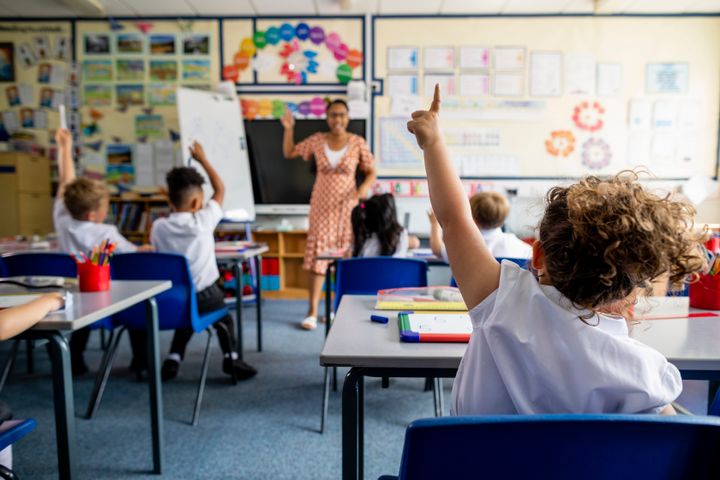
As cases of the Omicron variant of coronavirus continue to rise across the UK, schools are starting to feel the impact.
Hatch Warren Junior School in Basingstoke and Solent Infant and Junior School in Portsmouth have both identified cases of the variant, according to their respective councils.
The schools and local councils are now working with the UK Health Security Agency to manage the cases, by identifying close contacts of those infected. Close contacts will need to self-isolate for 10 days.
Meanwhile, all year five pupils at Manor Community Primary School in Kent have been advised to stay home and get tested due to an Omicron case.
It follows the closure of a Scottish primary school earlier this week. Parents at Todholm Primary School, in Renfrewshire, were told the school would be shut for the next five days after the suspected cases of the variant.
In an email sent to parents, Renfrewshire Council said the decision to close the school until Monday, December 13, was “due to the difficulty in operating the school with reduced teaching and support staff and maintaining an appropriate staffing level for the school”.
So, how is Omicron being monitored in schools, and what is the advice if your child’s school has a confirmed case? Should the entire year group stay home, the school close, or what?
How is Omicron identified?
Omicron is identified via PCR tests – and the system is the same for schools and all other settings.
Anyone who has Covid symptoms or has been in close contact with with a confirmed Covid case should do a PCR test. These tests are then analysed in a lab to identify Covid variants, such as Omicron.
There are two ways Omicron is tested. The first (and quickest way) to identify if the variant is Omicron is to see if the S-gene cannot be detected in a sample.
While this is not 100% accurate (as other mutations also cause PCRs to fail to detect an S-gene ) the government says this can be used as “a proxy method for tracking the variant”. In this instance, a school (and the parents) might be informed they have a “suspected” case of Omicron among pupils or staff.
A more accurate way of testing for Omicron is to complete whole-genome sequencing on the sample, but the results of this can take up to a week to come back.
Because of this, people are being told to self isolate if they have a “suspected” case of Omicron. You (or your child/children) should not wait until it’s a “confirmed” case.
The official rules for schools
At the moment, the official rules for schools are much like the rest of the population.
All individuals who have been identified as a close contact of a suspected or confirmed case of the Omicron variant – irrespective of vaccination status and age – will be contacted directly and required to self-isolate immediately for 10 days, and asked to book a PCR test.
A “close contact” does not necessarily include a whole year group. The government says close contacts are children/adults who’ve:
Had face-to-face contact, including being coughed on or having a face-to-face conversation within one metre.
Been within one metre for one minute or longer without face-to-face contact.
Been within 2 metres of someone for more than 15 minutes (either as a one-off contact, or added up together over one day)
Traveled in the same vehicle.
If your child falls into this category, you’ll be informed by the local health protection team or NHS Test and Trace and provided details about self-isolation.
The government is urging parents not to pull children out of school preemptively. If they’ve not been identified as a close contact of an Omicron case, they should “continue to attend school as normal”.
If a pupil in your child’s class has Covid-19 – but it is not a suspected or confirmed Omicron case – the advice is also to attend school as normal.
If there is a “substantial increase in the number of positive cases in a
setting” schools will be advised on next steps by a local Incident Management Team (IMT) or director of public health. The government has repeatedly made it clear that it wants to avoid disrupting education further and the closure of schools.
If your child is told to stay home, the school should support them to learn from home if they are well enough to do so.
To help spot Covid cases and limit the spread, the government is continuing to ask staff and secondary school pupils to do a lateral flow test twice weekly. This remains “voluntary but is strongly encouraged”. Primary age pupils in year six and below are not being asked to do tests.
Further details about Covid and schools – including details of how to claim financial support to care for a child who is self-isolating – can be found on the government’s website.